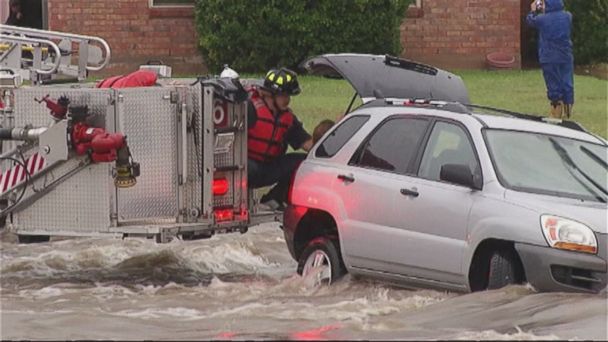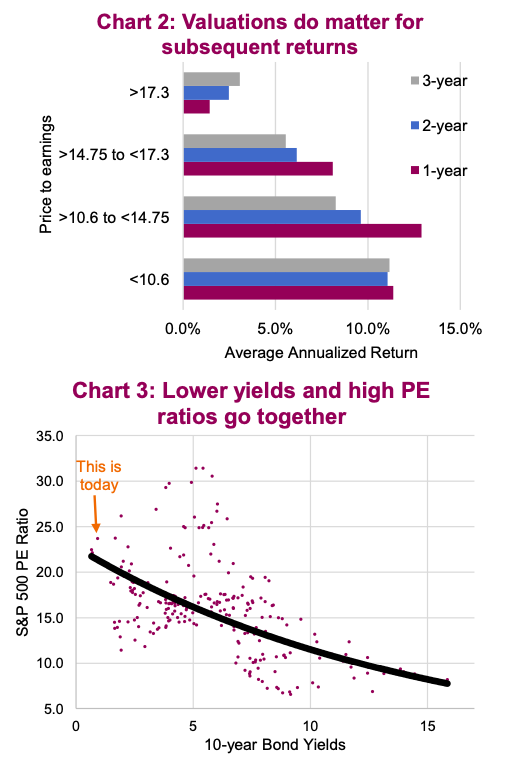Flash Flood Emergencies: Recognizing The Signs And Taking Action

Table of Contents
Recognizing the Warning Signs of Flash Flood Emergencies
Recognizing the subtle and overt signs of an impending flash flood is critical to ensuring your safety and the safety of your loved ones. Being vigilant and knowing what to look for can give you valuable time to prepare and react.
Sudden Heavy Rainfall
Intense rainfall is the primary trigger for flash floods. While a light shower poses little threat, sustained heavy rainfall, particularly over saturated ground, quickly overwhelms drainage systems. Rainfall rates exceeding one inch per hour often trigger flash flood warnings.
- Thunderstorms: Severe thunderstorms are a significant indicator of potential flash flooding. The intense, concentrated rainfall from these storms can easily lead to rapid water accumulation.
- Rapid Cloud Development: The sudden appearance of dark, ominous clouds, especially in combination with strong winds, can signal the arrival of a heavy rainfall event capable of causing flash floods.
- Flash Flood Watches and Warnings: Pay close attention to official weather alerts. A watch means conditions are favorable for flash flooding, while a warning signifies imminent danger.
Rapid Water Rise in Streams and Rivers
During flash floods, water levels in streams and rivers can rise dramatically within a short period. What may seem like a normal water flow can quickly become a dangerous, raging current.
- Overflowing Banks: If you see water overflowing the banks of a river or stream, this is a very clear indication of rising water levels and a potential flash flood.
- Debris in Water: Unusual amounts of debris, such as branches, logs, and trash, carried swiftly downstream, are a strong visual cue of rapidly increasing water flow and imminent danger.
- Increased Water Velocity: Observe the speed of the water. A noticeably faster current than usual is a significant warning sign.
Unusual Sounds and Sights
Besides the obvious visual cues, pay attention to the sounds and other unusual changes in your environment that might precede a flash flood.
- Rushing Water: The sound of rushing water, even from a distance, is a clear indicator that water levels are rising rapidly.
- Roaring Sound: A deep, roaring sound, similar to that of a waterfall, indicates a powerful and potentially dangerous flow of water.
- Debris Carried by Fast-Moving Water: Seeing debris such as branches or other objects being carried by rapidly flowing water is a clear warning sign.
- Muddy Water: Suddenly muddy water, particularly in normally clear streams, suggests significant runoff from heavy rainfall and potential flooding.
- Unusual Animal Behavior: Animals are often more sensitive to environmental changes than humans. Noticeably unusual animal behavior, such as animals fleeing an area, can be an early warning sign.
Official Warnings and Alerts
Always rely on official sources for weather information, especially during periods of heavy rainfall. Weather services issue flash flood watches and warnings to alert the public about potential dangers.
- Flash Flood Watch: This means conditions are favorable for flash flooding. Stay informed and be prepared to take action.
- Flash Flood Warning: This means flash flooding is occurring or is imminent. Take immediate action to protect yourself and your family.
- National Weather Service (NWS): Check the NWS website or app for real-time weather updates and alerts specific to your location. Many weather apps also provide these crucial alerts.
Taking Action During Flash Flood Emergencies
When a flash flood warning is issued or you observe the warning signs described above, immediate action is critical.
Evacuation Procedures
If you live in an area prone to flash flooding, have a pre-planned evacuation route. When a flash flood warning is issued, evacuate immediately.
- Secure Belongings: Quickly gather essential documents, medications, and valuables.
- Move to Higher Ground: Head to higher ground immediately, preferably to a designated evacuation shelter. Avoid low-lying areas.
- Follow Official Instructions: Obey all instructions from emergency officials.
Seeking Shelter
If evacuation is not possible, seek shelter on the upper floors of a sturdy building. Never attempt to drive through floodwaters; even a few inches of water can sweep a vehicle away.
- Stay Away from Windows: Avoid windows due to potential debris impacts.
- Monitor Water Levels: Keep track of the rising water levels.
- Have an Emergency Kit: A well-stocked emergency kit is essential for sheltering in place during a flash flood.
Post-Flood Safety
After the floodwaters recede, there are still significant dangers to consider.
- Downed Power Lines: Avoid contact with any downed power lines.
- Contaminated Water: Floodwaters are often contaminated with sewage and harmful chemicals. Avoid contact.
- Structural Damage: Check your home for structural damage before re-entering.
- Report Damages: Contact your local authorities to report any damages.
Conclusion
Surviving flash flood emergencies requires vigilance, preparedness, and swift action. By recognizing the warning signs of sudden heavy rainfall, rapidly rising waters, and unusual environmental changes, and by promptly following evacuation orders and safety precautions, you significantly increase your chances of survival and minimize potential damage. Remember to act decisively; seconds can matter during a flash flood emergency. Create a family emergency plan, learn more about flash flood preparedness in your area, and download a reliable weather app to stay informed about flash flood emergencies. Your life and the lives of your loved ones depend on it.

Featured Posts
-
 Le Pen Fait Appel Apres Condamnation A Quatre Ans De Prison Et Ineligibilite Immediate
May 26, 2025
Le Pen Fait Appel Apres Condamnation A Quatre Ans De Prison Et Ineligibilite Immediate
May 26, 2025 -
 Understanding High Stock Market Valuations Bof As Analysis For Investors
May 26, 2025
Understanding High Stock Market Valuations Bof As Analysis For Investors
May 26, 2025 -
 Apple Confirms I Phone Feature F1 Fans Will Love
May 26, 2025
Apple Confirms I Phone Feature F1 Fans Will Love
May 26, 2025 -
 Canada Posts Service Problems A Boon For Competitors
May 26, 2025
Canada Posts Service Problems A Boon For Competitors
May 26, 2025 -
 Paris Roubaix 2025 Gravel Bike Tech Tire Innovations And Mechanical Upgrades
May 26, 2025
Paris Roubaix 2025 Gravel Bike Tech Tire Innovations And Mechanical Upgrades
May 26, 2025
Latest Posts
-
 Euro Millions Winner Ticket Sold In Irish Shop Urgent Appeal
May 28, 2025
Euro Millions Winner Ticket Sold In Irish Shop Urgent Appeal
May 28, 2025 -
 Euro Millions Results Tuesday 15th April 34 Million Jackpot
May 28, 2025
Euro Millions Results Tuesday 15th April 34 Million Jackpot
May 28, 2025 -
 Euro Millions Live Results 34m Tuesday April 15th Draw
May 28, 2025
Euro Millions Live Results 34m Tuesday April 15th Draw
May 28, 2025 -
 Last Chance Five Days To Claim 300 000 Euro Millions Jackpot
May 28, 2025
Last Chance Five Days To Claim 300 000 Euro Millions Jackpot
May 28, 2025 -
 Time Running Out Claim Your 300 000 Euro Millions Win Now
May 28, 2025
Time Running Out Claim Your 300 000 Euro Millions Win Now
May 28, 2025
